Family : Chaenopsidae

Text © Giuseppe Mazza

English translation by Mario Beltramini
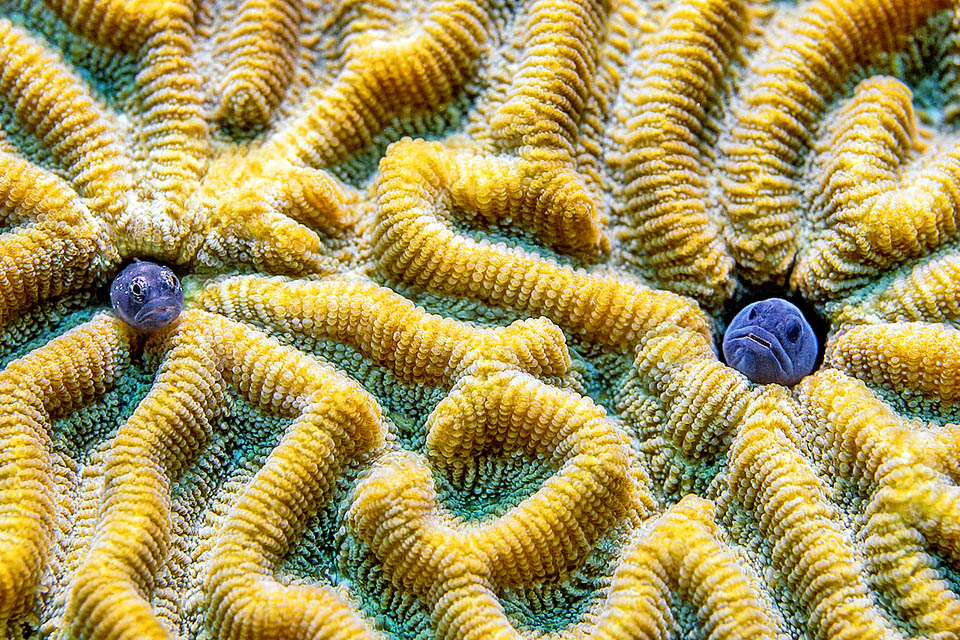
Emblemariopsis pricei reproductive males choose as home the tubes dug once into the madrepores by the Christmas tree worm (Spirobranchus giganteus) © Allison & Carlos Estape
In the imaginative world of the Blenniiformes we also find semi-transparent fish, called Glass blennies.
It is the case of Emblemariopsis pricei Greenfield, 1975, inserted in the class of the Actinopterygii, the ray-finned fish, and belonging to the family of the Chaenopsidae, that counts 14 genera and about one hundred American species often living, as is the case of Chaenopsis limbaughi, in tubes taken away from the annelids.
Here the lodgings are furnished by the Christmas tree worm (Spirobranchus giganteus) so called due to its showy multicoloured gills that spirally emerge from the madrepores, similar to cheerful Christmas trees.
When it passes away, tha males of Emblemariopsis pricei take possession of the solid tube dug by the annelid, but the house is small and the females may enter only in turns for rapid depositions.
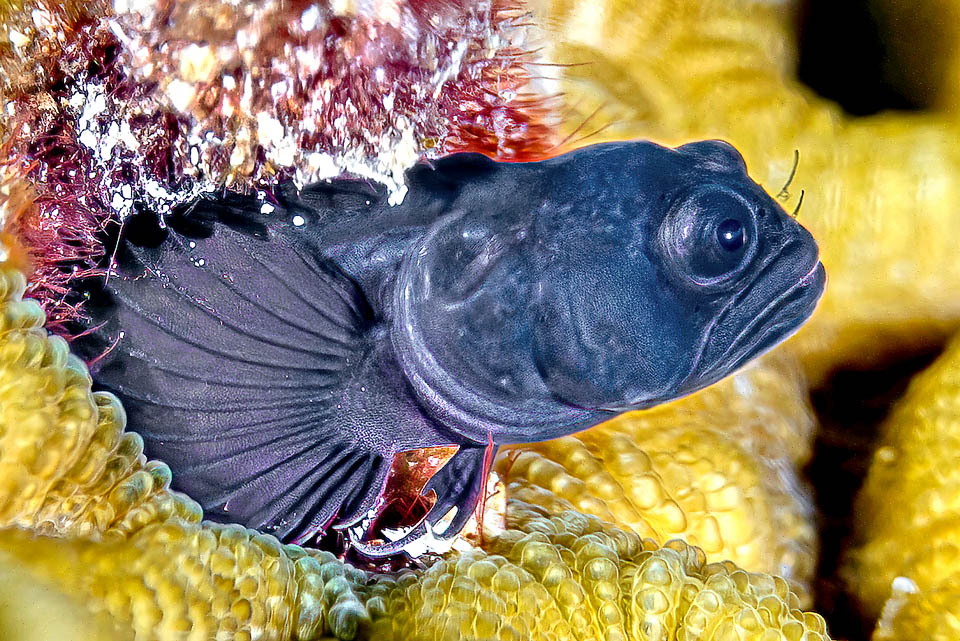
The lodge is deep but not very spacious, and only adult males who care about 300 eggs at various stages of development, laid once by more females can live there © Allison & Carlos Estape
So they spend their life, waiting, outside the door, camouflaged among the madreporic meanders or on the ramifications of the Common sea fans (Gorgonia ventalina).
In fact, in order to protect them, natural selection has made, over time, their body almost transparent, whilst in the males, who do not need it, have only the rear part slightly translucent.
The name of the genus Emblemariopsis, created by Longley in 1927, originated composed by that of the genus Emblemaria, assigned to other Chaenopsidae, and from the Greek “opsis” look, to say that it is a fish resembling these blennies. The specific term pricei, of Price in Latin, conversely reminds the Prime Minister of Belize, George C. Price (1919-2011) who authorized, facilitating, the research of Greenfield.
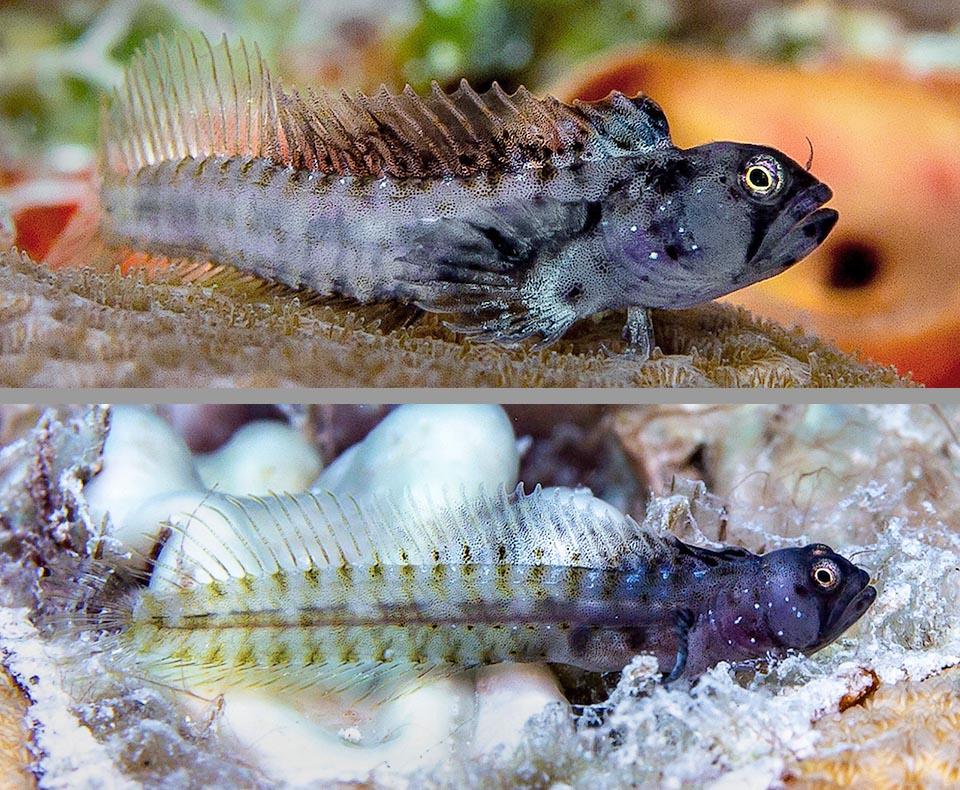
When they go out for food we note that they are partly translucent, but not transparent like the partners living at the best, shelterless, camouflaged in the surroundings © Allison & Carlos Estape
Zoogeography
In fact, Emblemariopsis pricei is found from Belize up to Roatán, Island off the coasts of Honduras, occupying a range not exceeding 20.000 km².
Ecology-Habitat
It is a sedentary species present, between 1 and 30 m of depth, in a madreporic environment with temperatures between 27,3 and 27,9 °C, but only lives the Spirobranchus giganteus and therefore with a much more selective habitat compared to the other Chaenopsidae.
Morphophysiology
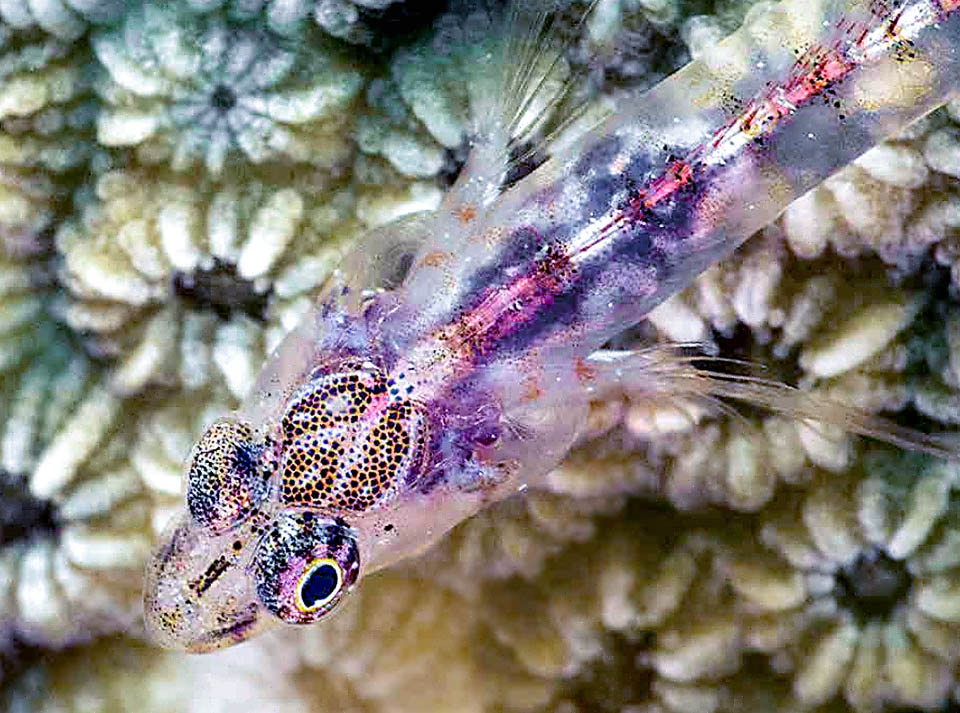
The females, who measure only 2 cm against 2,9 of males, distinguish also for the characteristic dorsal drawing behind eyes: an oval with black points and upside down Y © Mickey Charteris
Emblemariopsis pricei in the males reaches a maximum length of 2,9 cm, whilst the females do not exceed 2 cm.
The elongated body does not have the lateral line and has no scales. The head is small and spineless, without bony crests or tendrils over the eyes, with short and blunt snout. On both sides the mouth has a row of teeth.
The dorsal fin has 20 spiny rays much shorter than the following soft 12-14 ones; the abal 2 spines and 21-23 unarmed rays. The pectorals have 14 rays and the pelvic ones, that precede the pectorals, are much shorter than these with an inner spine and 3 soft rays.
The reproductive adult males, who peep from the tubes, have black heads, at times with small white spots on the operculum. The pectoral fins and the upper part of the fish up to the sixth spine of the dorsal are black and then the body gets greyish, translucent on the sides.

Here two, almost invisible due to their transparency, up on a madrepore or below under a big Common sea fan (Gorgonia ventalina) © Allison & Carlos Estape
The females have the dorsal fin colourless and are practically transparent with red strokes and pinkish shades.
Characteristic is the dorsal drawing behind the eyes, with an oval band dotted with dark that displays a clear drawing of an upside down red-stemmed Y that then continues at times on the back.
Also the juveniles are transparent and resemble the females.
Ethology-Reproductive Biology
Emblemariopsis pricei feeds on plankton, eggs and larvae of fish, little worms and small crustaceans.
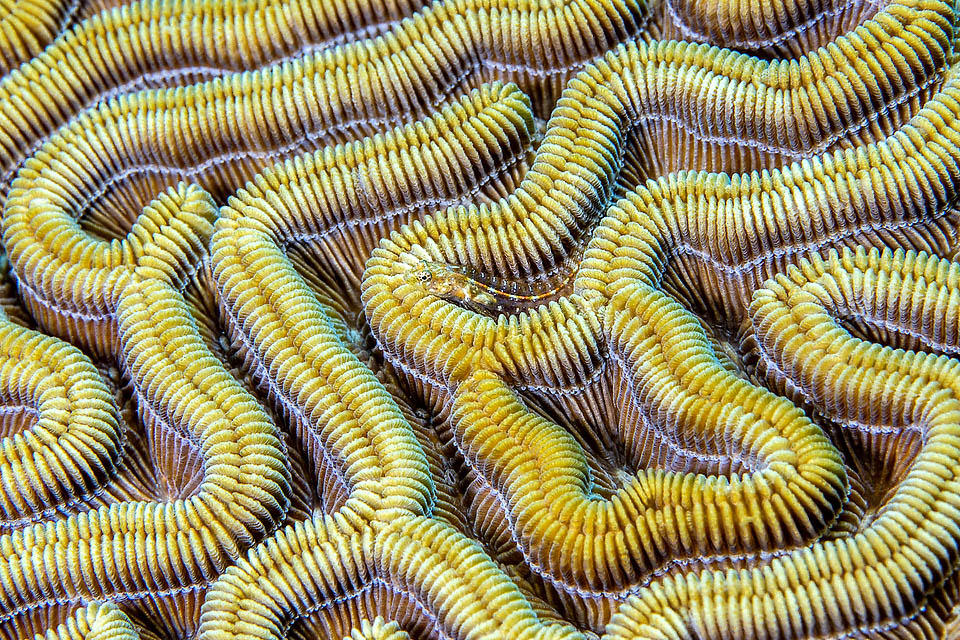
Good who sees this on madrepore! Emblemariopsis pricei, present in less than 20.000 km² in the waters off Belize, is at risk also due reef death © Allison & Carlos Estape
The females may deposit 21-27 eggs each knocking on the male’s door who fecundates them and surveys them until they hatch, but is not by sure a champion of fidelity, as proves the presence of about 300 eggs at different stages of development in its tubular den.
The resilience of the species is low with a minimum time for doubling of the populations of 4,5-14 years, but theCommon sea fan fishing vulnerability, very low, marks only 10 on a scale of 100.
Since 2007 Emblemariopsis pricei however appears as “VU Vulnerable” in the IUCN Red List of the endangered species, because its range is small and suffers the consequences of the environmental degradation linked to human activities and to the global warming causing the death of the reef.
→ For general information about FISH please click here.
→ For general information about BONY FISH please click here
→ For general information about CARTILAGINOUS FISH please click here.
→ To appreciate the BIODIVERSITY of BONY FISH please click here.
→ To appreciate the BIODIVERSITY of CARTILAGINOUS FISH please click here.
